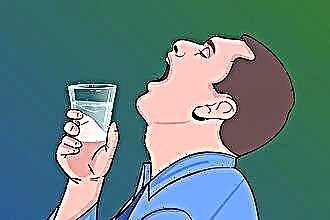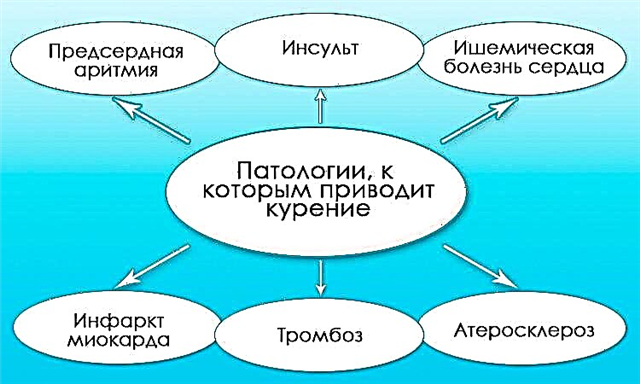Many are concerned about the occurrence of nausea and vomiting with angina. However, before dealing with this problem, it is necessary to find out what angina is, what symptoms are characteristic of this disease. So angina is called an infectious disease, the focus of inflammation of which is in the pharynx. Anyone can become infected with angina, but children are more likely to get sick, since their immune system has not yet fully formed and is not able to fully resist the infection. Most often, sore throat is caused by bacteria or fungi. In order for pathogenic microorganisms to begin to actively multiply in the nasopharynx, they need suitable conditions - this can be a weakened immune system, polluted air, a sharp temperature drop, etc.
Causes of nausea
Effective treatment of tonsillitis should be carried out in a comprehensive manner and should be aimed at destroying the pathogen itself and weakening the symptoms of the disease. Among the main symptoms of the disease are:
- a sharp sore throat that increases with solid food intake;
- a significant increase in body temperature, which often reaches high values - up to 40-41 ° С;
- general weakness, dizziness, nausea, vomiting.
Almost all of the above symptoms that occur with angina are known to many from childhood, because they are similar to the signs of many colds, with the exception of nausea and vomiting. In order to effectively deal with these symptoms, it is necessary to understand the reasons for their occurrence. There are several main reasons:
- high intoxication of the body caused by toxins and decay products;
- irritating effect on the mucous membrane of the throat, resulting from the pressure exerted by enlarged tonsils, purulent plugs and plaque;
- the body's response to a sharp increase in temperature;
- taking medications in the treatment of the underlying disease.
Once the most likely causes of nausea have been identified, appropriate symptom treatment should be initiated.
Treatment
If vomiting with angina occurs as a result of high intoxication of the whole body, then you should try to remove harmful substances from the body as soon as possible. In this case, the main symptom that occurs against the background of other signs of angina will be a headache. To eliminate the signs of intoxication of the body, the use of large volumes of liquid is shown, as well as diuretics and sorbents, which will help to bind all toxins and bring them out.
If nausea with purulent sore throat occurs due to the fact that the root of the uvula is irritated by enlarged tonsils or purulent formations, then in this case, rinsing with salt water, the use of antiallergic drugs, antiseptics, and non-steroidal anti-inflammatory drugs will be the best treatment for symptoms ... Antiallergic drugs can be used during further treatment to prevent the onset of unpleasant symptoms. To remove purulent formations, you can do mechanical cleaning of the surface of the tonsils. To do this, it is periodically necessary to treat plaque and purulent plugs with an antiseptic solution, and then remove all formations from the tonsils. After each such procedure, gargling with antiseptic solutions is shown.
Important! Frequent use of the mechanical method of removing purulent plaque from the tonsils can lead to expansion of the affected area.
Quite often, vomiting with angina can be a reaction to a significant increase in temperature. Most often, this cause of vomiting occurs in children. In this case, it is necessary to bring down the elevated temperature before it reaches the point at which nausea occurs. To lower the temperature, drugs are used, which include substances such as paracetamol, ibuprofen, nimesulide. Also, wipes with a damp towel soaked in a weak solution of vinegar or alcohol are quite effective at elevated temperatures. However, when rubbing a child, very weak solutions of acetic acid should be used, while the use of alcohol is contraindicated, since alcohol can enter the bloodstream through the skin, which will only complicate the course of angina.
Important! Rubbing with alcohol for young and middle-aged children is prohibited!
Let's now figure out how to deal with vomiting and nausea if they are caused by taking an antibiotic. So, first of all, it is necessary to switch to intramuscular injections if the drug was used orally. If the symptoms persist even with intramuscular administration of the drug, you should consider replacing the drug with an analogue. It often happens that patients have different reactions to the same drug from different manufacturers.
Features of taking antibiotics for nausea
Everyone knows the negative consequences of taking antibiotics. However, as you know, angina caused by a bacterial infection should be treated exclusively with antibacterial agents. Such treatment often leads to indigestion, nausea, vomiting, diarrhea, etc. After all, the effective effect of antibiotic therapy on the pathogenic microorganisms that caused angina entails a negative effect on the entire body. Also, the appearance of nausea and vomiting with angina may be due to improper use of the drug or its overdose. In order to reduce or completely eliminate these symptoms, you must stop taking this drug and replace it with another.
Important! The replacement of the drug should be carried out under strict supervision or as directed by the attending physician.
Gastric sore throat
As noted above, with angina, intoxication often occurs, which children are more susceptible to. So, in a child, this process is more complex and can often be accompanied by unpleasant symptoms in the form of nausea and vomiting. This type of sore throat is called gastric.
Important! After an attack of vomiting, it is advisable not to eat food for the next two hours.
 When treating this type of sore throat, the choice of antibiotic must be approached especially carefully, since the child's body does not tolerate the effect of potent drugs. Such medications can irritate the intestinal mucosa, which provokes pain, discomfort, nausea, and diarrhea. After the drug is digested, the discomfort usually disappears.
When treating this type of sore throat, the choice of antibiotic must be approached especially carefully, since the child's body does not tolerate the effect of potent drugs. Such medications can irritate the intestinal mucosa, which provokes pain, discomfort, nausea, and diarrhea. After the drug is digested, the discomfort usually disappears.
After the first vomiting, it is advisable to take a break for six to seven hours, while the patient can eat extremely light food, excluding rough food from the diet. When it comes to a child, it is better to use diet soups, porridge boiled in water, bananas and steamed vegetables. Such a diet will be beneficial not only for children, but also for adult patients.
Important! A diet for angina accompanied by nausea should exclude fried and spicy foods.
Prevention and treatment of vomiting syndrome
In order to prevent and reduce nausea with angina caused by various factors, I use various methods.
- Herbal infusions and teas can be made. In this case, various medicinal herbs are brewed, which help to treat sore throats and soothe the nervous system. Chamomile tea is also effective. However, before using this or that medicinal herb, you need to consult a doctor who will help you to correctly determine the dosage and frequency of administration.
- Also, to reduce nausea and treat vomiting, drugs are used that help stabilize the intestinal microflora.



